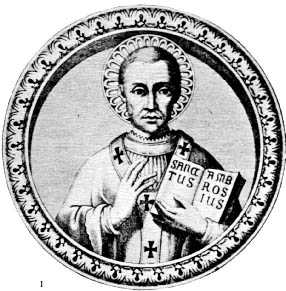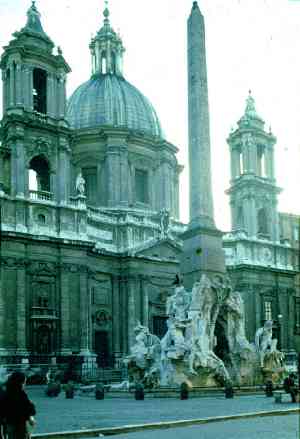Gospel Mt 22:1-14
Jesus again in reply spoke to the chief priests and the elders of the people in parables
saying, “The Kingdom of heaven may be likened to a king
who gave a wedding feast for his son.
He dispatched his servants to summon the invited guests to the feast,
but they refused to come.
A second time he sent other servants, saying,
‘Tell those invited: “Behold, I have prepared my banquet,
my calves and fattened cattle are killed,
and everything is ready; come to the feast.”’
Some ignored the invitation and went away,
one to his farm, another to his business.
The rest laid hold of his servants,
mistreated them, and killed them.
The king was enraged and sent his troops,
destroyed those murderers, and burned their city.
Then the king said to his servants, ‘The feast is ready,
but those who were invited were not worthy to come.
Go out, therefore, into the main roads
and invite to the feast whomever you find.’
The servants went out into the streets
and gathered all they found, bad and good alike,
and the hall was filled with guests.
But when the king came in to meet the guests
he saw a man there not dressed in a wedding garment.
He said to him, ‘My friend, how is it
that you came in here without a wedding garment?’
But he was reduced to silence.
Then the king said to his attendants, ‘Bind his hands and feet,
and cast him into the darkness outside,
where there will be wailing and grinding of teeth.’
Many are invited, but few are chosen.”















 Secondo Damaso, il martirio di Agnese consistette nel rogo, che ella affrontò con coraggio e con l'estremo atto pudico di coprirsi il corpo nudo con la folta chioma dei capelli. L'associazione tra fuoco e denudamento ha fatto pensare (Frutaz) alla pena delle fiaccole con cui si ustionava il corpo, per poi finire la vittima con un colpo di grazia. Del resto le ossa di S. Agnese non presentano tracce di combustione.
Secondo Damaso, il martirio di Agnese consistette nel rogo, che ella affrontò con coraggio e con l'estremo atto pudico di coprirsi il corpo nudo con la folta chioma dei capelli. L'associazione tra fuoco e denudamento ha fatto pensare (Frutaz) alla pena delle fiaccole con cui si ustionava il corpo, per poi finire la vittima con un colpo di grazia. Del resto le ossa di S. Agnese non presentano tracce di combustione. S. Ambrogio, basandosi su tradizioni orali, parla della costrizione ad adorare dèi pagani, e di un tiranno che la voleva ad ogni costo prendere in sposa. Agnese, rifiutando, preferì il martirio, che però le venne dalla spada del carnefice, invece che dal fuoco, anche se non è specificato se si trattò di decapitazione o iugulazione (taglio della gola). Ugualmene presente, nel racconto del vescovo di Milano, la volontà di coprirsi le nudità, ma in questo caso per mezzo di una veste.
S. Ambrogio, basandosi su tradizioni orali, parla della costrizione ad adorare dèi pagani, e di un tiranno che la voleva ad ogni costo prendere in sposa. Agnese, rifiutando, preferì il martirio, che però le venne dalla spada del carnefice, invece che dal fuoco, anche se non è specificato se si trattò di decapitazione o iugulazione (taglio della gola). Ugualmene presente, nel racconto del vescovo di Milano, la volontà di coprirsi le nudità, ma in questo caso per mezzo di una veste. Interessante è notare come la tradizione popolare situasse tale luogo infame in un fornice dello stadio di Domiziano, detto anche circo agonale, dalla cui forma è scaturito il perimetro di Piazza Navona. La piccola chiesa che vi era stata costruita nell'VIII secolo, venne più volte ricostruita, ed infine sostituita nel XVII secolo dalla maestosa chiesa di S. Agnese in Agone, progettata dagli architetti barocchi Carlo Rainaldi e Carlo Borromini su incarico di papa Innocenzo X. Mentre dunque S. Agnese fuori le mura ricorda il luogo di sepoltura della Santa, la chiesa di Piazza Navona serba la testimonianza topografica del suo martirio.
Interessante è notare come la tradizione popolare situasse tale luogo infame in un fornice dello stadio di Domiziano, detto anche circo agonale, dalla cui forma è scaturito il perimetro di Piazza Navona. La piccola chiesa che vi era stata costruita nell'VIII secolo, venne più volte ricostruita, ed infine sostituita nel XVII secolo dalla maestosa chiesa di S. Agnese in Agone, progettata dagli architetti barocchi Carlo Rainaldi e Carlo Borromini su incarico di papa Innocenzo X. Mentre dunque S. Agnese fuori le mura ricorda il luogo di sepoltura della Santa, la chiesa di Piazza Navona serba la testimonianza topografica del suo martirio.